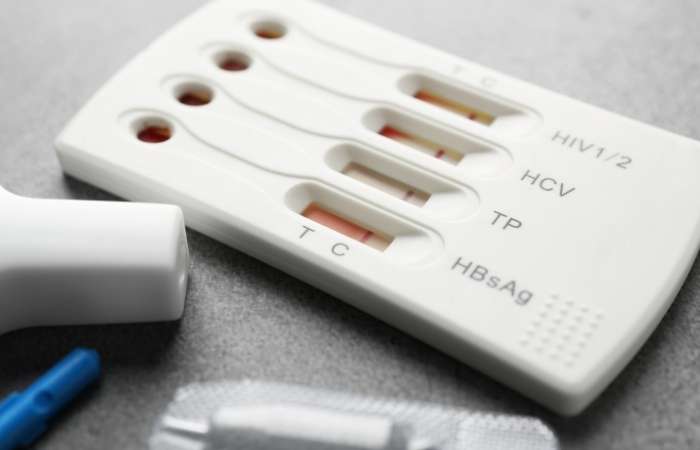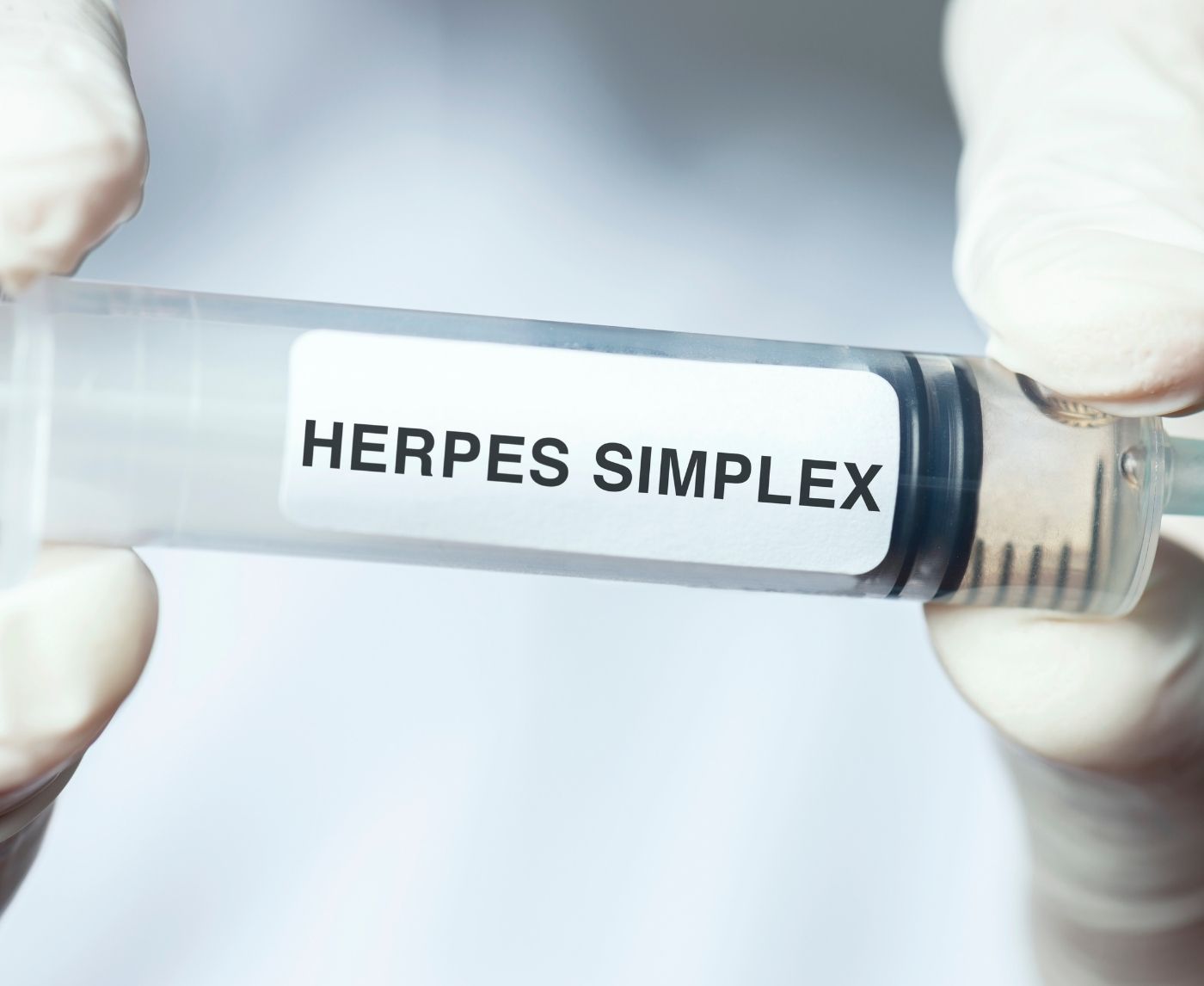When to Test for Syphilis After Exposure (And When Not To)
Quick Answer: You can now test for herpes at home using kits that detect antibodies or viral antigens. They’re private, quick, and often accurate, but results depend on timing, symptoms, and how you collect the sample.
Why Testing in Your Bedroom Is a Big Deal
Let’s be blunt: herpes still carries more stigma than it deserves. While nearly 1 in 6 people in the U.S. has genital herpes according to the CDC, many don’t know it because they’ve never been tested, or never had symptoms. The idea that you can swab yourself in the bathroom and get answers in minutes is a game-changer. Not just medically, but emotionally.
At-home testing flips the script. No awkward clinic visits. No side-eye from pharmacists. No sitting in traffic just to pee in a cup or get swabbed by a stranger. It's you, your kit, your timeline. And that matters, especially if you’re dealing with a panic spiral, a new hookup, or a partner you’re afraid to disappoint.
But convenience doesn’t mean corner-cutting. The tech behind today’s at-home tests, lateral flow cassettes, antibody screening, rapid antigen detection, mirrors what clinics use, minus the lab coat. Some tests give results in 10 minutes. Others let you swab and mail off to a lab for full diagnostic analysis.

People are also reading: Herpes Symptoms That Don’t Look Like Herpes (Especially at First)
The Symptom That Started It All
Most people don’t test for herpes until something forces them to. A blister. A sting when they pee. A partner who brings it up. Sometimes it's the smallest thing, an itch that doesn’t go away, or a weird spot they swear wasn’t there yesterday. The problem? These symptoms can mean herpes, but they can also mean nothing at all.
Samantha, 23, thought it was just a heat rash from her yoga leggings.
“It didn’t even hurt,” she said. “But it looked…off. I didn’t want to be that person who overreacts, but I couldn’t shake the feeling.”
She used a mirror, Googled, spiraled, and ended up ordering a test online that same night. “The hardest part was waiting. The easiest part was doing it myself.”
Herpes doesn’t always show up with textbook symptoms. In fact, according to a 2022 review in the journal Sexually Transmitted Infections, over 80% of genital herpes infections are asymptomatic or unrecognized. That means most people pass it on without knowing they have it. Testing is often the only way to get ahead of it, especially if you’re sexually active, have multiple partners, or just want peace of mind before a new relationship.
But here’s where it gets tricky: not all tests are created equal, and timing matters. Swab too early, and the virus might not be detectable yet. Swab the wrong spot, and you could miss the infected area altogether. That’s why knowing how these kits work (and how to use them) is just as important as having access to them.
How At-Home Herpes Tests Actually Work
There’s no wand that instantly detects herpes, despite what late-night TV might imply. But at-home tests are surprisingly sophisticated. Most rapid herpes kits detect antibodies, your immune system’s response to HSV-1 or HSV-2. Others, especially swab-based tests, check directly for viral DNA or antigens in a sore.
If you’re using a fingerstick blood test, you're checking for antibodies. These usually take a few weeks to show up after exposure, which means you need to give your body time. If you’re swabbing a lesion, you're aiming to catch the virus itself, but only if you swab the right area and the virus is active at the time.
The mechanics are straightforward. You prick your finger or swab the affected area, place the sample into a buffer solution, and apply it to a cassette. The kit will display your result using control and test lines, just like a pregnancy test. Some come with QR codes to walk you through step-by-step video instructions. Others include written guides with diagrams.
Compliance is what counts. It's simple to state, but research has shown that user mistake causes inaccurate home test results and not defective kits. A peer-reviewed 2023 article in Sexually Transmitted Diseases revealed that most false interpretations were caused by incorrect reading of test lines or unsuitable sample handling.
Table 1. Comparison of common herpes testing methods used in at-home and clinical settings. Timing, sample collection, and privacy levels vary.
When Should You Test (And Retest)?
The biggest mistake people make with at-home tests? Testing too early and assuming a negative means they’re in the clear. Antibodies take time to form. Lesions aren’t always shedding virus. And symptoms may show up late, or not at all.
Malik, 31, got tested five days after a new hookup when he noticed a weird tingling sensation but no visible sores. The test came back negative.
“I felt relieved,” he said. “But then two weeks later, I had this sore on my thigh, and I panicked. I took another test, and this time it was positive for HSV-2.”
This kind of timeline is common. According to the NHS, herpes symptoms can appear between 4 and 7 days after exposure, but antibody tests often don’t register reliably until at least 2–4 weeks in. Swab tests can detect the virus during an active outbreak, but only if you catch it while it’s shedding.
So what’s the move? If you’ve had a risky encounter or a new partner and you’re feeling off, or just unsure, it’s okay to test early, especially if you're symptomatic. But don’t treat a negative result like gospel unless you’ve waited for that accuracy window. Retesting after two to four weeks can catch what the first test missed.
Reading Your Herpes Test: What the Lines Actually Mean
So you’ve pricked your finger, dropped the blood, waited the 15 minutes, and now you're staring at your test strip like it's a crystal ball. Here's the deal: one line means negative. Two lines? Positive. No lines or just a test line with no control line? Invalid.
But what about the dreaded faint line? That shadowy second bar that seems like it might be there, if you squint, tilt it, hold it under a lamp? You're not alone. Faint lines are the #1 source of confusion and anxiety. According to a 2022 study published in the Journal of Clinical Virology, misinterpreting faint positives accounted for up to 17% of erroneous self-reported results across various at-home test kits.
If a second line appears, even faint, it usually indicates a positive result. The line represents detected antibodies. The strength of the line may vary depending on the stage of infection or even how much sample was applied. But faint doesn't mean fake. When in doubt, retest in a week or follow up with a clinical confirmatory test. And if your test shows no lines at all or just one in the wrong spot? That’s a busted test, throw it out and try again.
Table 2. Interpreting results from at-home herpes test kits. Faint lines are typically positive, not defective.
Privacy, Disposal, and Life After the Result
No one wants a bright pink box screaming “STD TEST!” on their porch. Thankfully, at-home herpes kits are shipped in plain packaging, often with tracking and no medical branding. Inside, you’ll find the test materials, detailed instructions, and sometimes even a QR code linking to a walk-through video. After use, kits can be discreetly discarded, wrap the test in the biohazard pouch (if included) or seal it in a bag and toss with regular trash. There's no bio waste unless your kit includes blood lancets, which are typically sharps-safe and can be disposed of in hard containers if you don’t have a formal sharps box.
As for your result, whether it’s positive, negative, or “huh?”, you’re still in control. That’s the beauty of doing this from home. You choose when (and if) to tell a partner. You decide what to do next. And you get to process your reaction in private, without fluorescent clinic lights or judgmental glances from across the waiting room.
Need to talk to someone? Many telehealth platforms now offer STI consults for a fraction of the cost of an in-person visit. Some even prescribe antiviral meds like valacyclovir if you test positive and want to start treatment. You’re not alone, even if you feel like it in that moment.
Whether you’re testing out of curiosity, fear, or love, it’s your body and your decision. STD Test Kits offers discreet, fast, doctor-trusted kits you can use in the quiet of your own space.

People are also reading: Hooked Up at a Festival? Here’s What You Might’ve Caught
FAQs
1. Can you test for herpes even if you feel totally fine?
You absolutely can, and honestly, you probably should. Herpes is the master of disguise. Most people carrying it never get dramatic outbreaks. No blisters, no pain, just a virus quietly hanging out in your system. At-home tests (especially antibody ones) are perfect for these “just in case” moments, like starting a new relationship or suddenly realizing your ex wasn’t as monogamous as advertised.
2. What’s the difference between HSV-1 and HSV-2? Why should I care?
Think of them as messy cousins. HSV-1 is usually behind cold sores (mouth stuff), HSV-2 is more common genitally, but they don’t respect boundaries. You can get HSV-1 on your junk and HSV-2 on your face. The kicker? Either can spread through oral, vaginal, or anal sex. That’s why most test kits check for both. No assumptions, just answers.
3. How soon after sex can I test?
If you’re using an antibody test, give your body time to actually respond, ideally two to four weeks post-exposure. Swab tests (for sores) work sooner, but only during an outbreak. Test too early and you might get a false negative that feels great for a minute, until your immune system catches up and drops the truth bomb later. TL;DR: earlier testing is okay, just plan to retest if symptoms show up or nerves persist.
4. I got a faint line on my test. Am I doomed or what?
Breathe. A faint line is usually still a line. These tests detect presence, not drama. Faint doesn’t mean fake, it just means the antibody level is low, maybe early-stage, maybe your sample was light. You can retest in a week or confirm at a clinic, but don’t ignore it just because it’s barely there. Herpes doesn’t care about your lighting.
6. Are these tests ever wrong?
Short answer: sometimes. Longer answer: not as often as people think. False positives and false negatives happen, especially if you mess up the instructions or test too soon. But these kits use tech similar to what clinics use. If your result feels weird or high-stakes, you can always get a second opinion. Double-checking isn’t drama, it’s smart.
7. Will anyone know I ordered a herpes test?
Unless you announce it on Instagram, no. These kits show up in plain packaging with no “Guess Who Might Have an STD” stickers. It’s just a box. What’s inside, and what you do with the result, is 100% your business.
8. Do I need a prescription for this?
Not even close. At-home herpes tests are sold over-the-counter online, just like vitamin gummies or weird TikTok skincare. You can grab one whenever you want, no gatekeeping required. Order direct from STD Test Kits and it’s on your doorstep in days.
9. I had oral sex. Should I still test for herpes?
Yep. Oral sex isn’t a hall pass. HSV-1 (mouth herpes) can spread to genitals and vice versa. If you’ve had unprotected oral contact, even just once, it’s fair game for testing. Especially if there was stubble, a cut, or a surprise cold sore in the mix. Better safe than burning.
10. Do herpes antibodies ever go away?
Not really. Once your immune system clocks herpes, it keeps those antibodies on file for life. That’s why you can still test positive years later, even if you haven’t had a single outbreak since. It’s not a glitch, it’s just how your immune system works: like a bitter ex that never forgets.
11. Do I have to tell my partner if I test positive?
Technically? Depends on the laws where you live. Ethically? Yeah, you should. But telling someone doesn’t have to be a death sentence for the relationship. Loads of people have herpes. Loads of couples navigate it just fine. Frame it as care, not confession. And if they ghost? That’s on them, not your diagnosis.
You Deserve Answers, Not Assumptions
You might be here because something doesn't feel right. It could be a bump. It could just be a question that keeps coming back to you. No matter what, you're not overreacting, and you're not the only one.
You can take herpes tests at home that are private, quick, and give you control. You can take one before starting a new relationship, after noticing a strange symptom, or just because you care about your sexual health. No matter what the reason is, it's okay. Your body, your limits, and your business.
Don't put off getting the answers you need. This herpes test kit for home use can accurately and discreetly check for both HSV-1 and HSV-2 from the comfort of your own home.
How We Sourced This Article: We combined current guidance from leading medical organizations with peer-reviewed research and lived-experience reporting to make this guide practical, compassionate, and accurate. In total, around fifteen references informed the writing; below, we’ve highlighted some of the most relevant and reader-friendly sources.
Sources
1. NHS – Genital Herpes Overview
2. STD Journal – User Error in At-Home Testing
3. Screening for Genital Herpes | CDC
5. Herpes (HSV) Test: MedlinePlus
About the Author
Dr. F. David is an infectious diseases physician who has been board-certified in infectious diseases and has extensive knowledge in the prevention, diagnosis, and management of STIs. He combines his professionalism with his frankness and sex-positive standpoint to cater to readers in metropolitan and off-grid communities.
Reviewed by: A. Chen, RN, MPH | Last medically reviewed: October 2025
This article is for informational purposes and does not replace medical advice.






